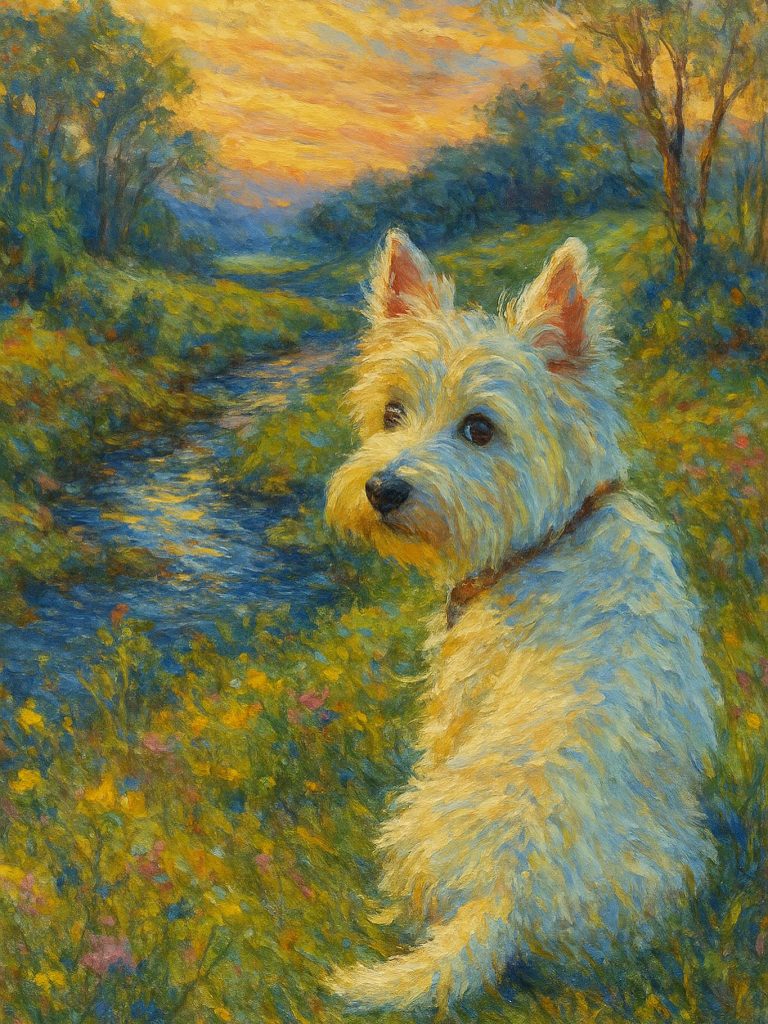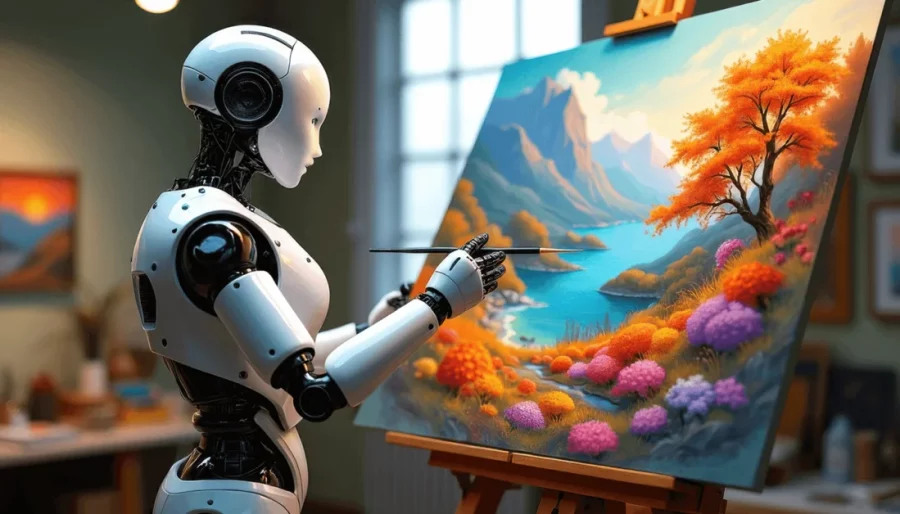Introduction of Encoding & Decoding Theory
Hall (1980) believes that the meaning of media is not simply transmitted, but constantly constructed through the process of encoding and decoding. In the coding process, the producer embeds specific values and narratives into the text; during decoding, the audience derives dominant, negotiated, or oppositional interpretations based on their own experience. Fiske (1987) emphasised the polysemy characteristics of media texts, while Morley (1980) pointed out that different social groups will come up with completely different interpretations due to their different social status. AI-generated art is a typical polysemic text, as it is given a completely different meaning by technology companies, artists, ordinary users, customers, and other parties.
Technically, AI art is generated through a system trained on a large-scale dataset. Models such as “stable diffusion” compress visual elements ŌĆö light, composition, style traits) into a latent space and generate images based on text prompts (Rombach et al., 2022). Therefore, AI art has been endowed with the characteristics of a popularised creative tool, which has been praised for its high efficiency, low entry threshold, and convenience.
Three Ways of Decoding
However, once it enters public discussion, interpretations diverge significantly. Many users and technology companies regard AI as a tool for creative expression, which reflects the dominant interpretations. Others hold more complex attitudes: they recognise its convenience, but are cautious about copyright risks, style homogenisation, and potential impact on the creative industry. These reactions align with the negotiated interpretations.
screenshot from Instagram
link: https://www.instagram.com/p/DL0PBJip97v/?igsh=c2ptcDdnMTF5bW0%3D


In contrast, professional artists are more inclined to adopt an oppositional position. AI models are usually trained based on a large number of unauthorised artworks, absorbing stylistic elements and years of accumulated labour without offering any form of compensation. At the same time, the influx of AI-generated images is lowering market rates of the illustration market and impacting the livelihood of artists. For these creators, AI is not just a tool, but a direct threat.
screenshot from The Art Newspaper
link: https://www.theartnewspaper.com/2024/08/15/us-artists-score-victory-in-landmark-ai-copyright-case?utm_source=chatgpt.com
Case Study
A striking example is that three students from the CAA, which is one of the most famous art colleges in China, shared their painting process on Xiaohongshu (a social media platform in China). The audience found anomalies similar to AI in their works, including a hand with ŌĆ£seven fingersŌĆØ, and accused them of treating the AI-generated images as original works. Although these students later admitted to using the help of artificial intelligence, the backlash revealed something deeper than doubts about technique: it reflected the judgment of the authenticity of art. This echoes Hall’s view that the audience will have a specific emotional and ideological framework when they come into contact with media texts; they do not just “identify information”, but actively produce meaning.
screenshot from Xiaohongshu
link: https://www.xiaohongshu.com/explore/65d72ed0000000000b020a72?note_flow_source=wechat&xsec_token=CBwu_d6XvyHQNKsY1AO0QE_PYV4MQxW_ryizIfojCYPD0=

In view of these controversial interpretations, we need to think critically about the concept of “AI as a tool that benefits the wider public”. Although AI undoubtedly lowers the threshold of creation, this “democratisation” is based on the unauthorised use of a large amount of artistic labour. Technology companies and users enjoy convenience, while original creators have to bear the cost. Without proper mechanisms for consent, compensation, and transparency, this accessibility will eventually exacerbate structural inequality in the cultural industry.
In essence, the debate over AI art is not about technology, but about the meanings we attach to it. As long as different groups constantly assign different values to it, AI art will remain a symbolic place for continuous struggle. In the end, AI may be a double-edged sword, but its impact mainly depends on how we use it.
References
Featured image: https://aaft.com/blog/fine-art/the-future-of-art-ai-fine-arts-and-the-rise-of-creative-technology/
Fiske, J. (1987) Television Culture. London: Routledge, pp. 85ŌĆō128. Available at: https://www.taylorfrancis.com/reader/download/0588d2ab-f7a4-455d-8242-54fbbbe86511/chapter/pdf?context=ubx [Accessed 15 Nov 2025].
Hall, S. (1980) ŌĆśEncoding/DecodingŌĆÖ, in Hall, S. et al. (eds) Culture, Media, Language. London: Hutchinson, pp. 128ŌĆō138.
Morley, D. (1980) The Nationwide Audience: Structure and Decoding. London: BFI Publishing, pp. 52ŌĆō78.
Rombach, R. et al. (2022) ŌĆśHigh-resolution image synthesis with latent diffusion modelsŌĆÖ, CVPR 2022, pp. 1ŌĆō20. Available at: https://openaccess.thecvf.com/content/CVPR2022/papers/Rombach_High-Resolution_Image_Synthesis_With_Latent_Diffusion_Models_CVPR_2022_paper.pdf [Accessed 15 Nov 2025].


I agree with your point about AI art being ŌĆ£polysemic.ŌĆØ I think it is interesting how technology companies often focus on the positive side, while artists and some users are way more critical. It really highlights how power and social positions shape these conversations.Your post also made me think more about the ethics behind making art with AI.
Even if it lowers the barrier for creation, it does feel unfair when original artists do not get proper credit or rewards for their work. It is a reminder that technology isnŌĆÖt neutral the values attached to it depend on whose side you are on. Overall, I think you did a great job showing that debates about AI art go beyond technology itself.